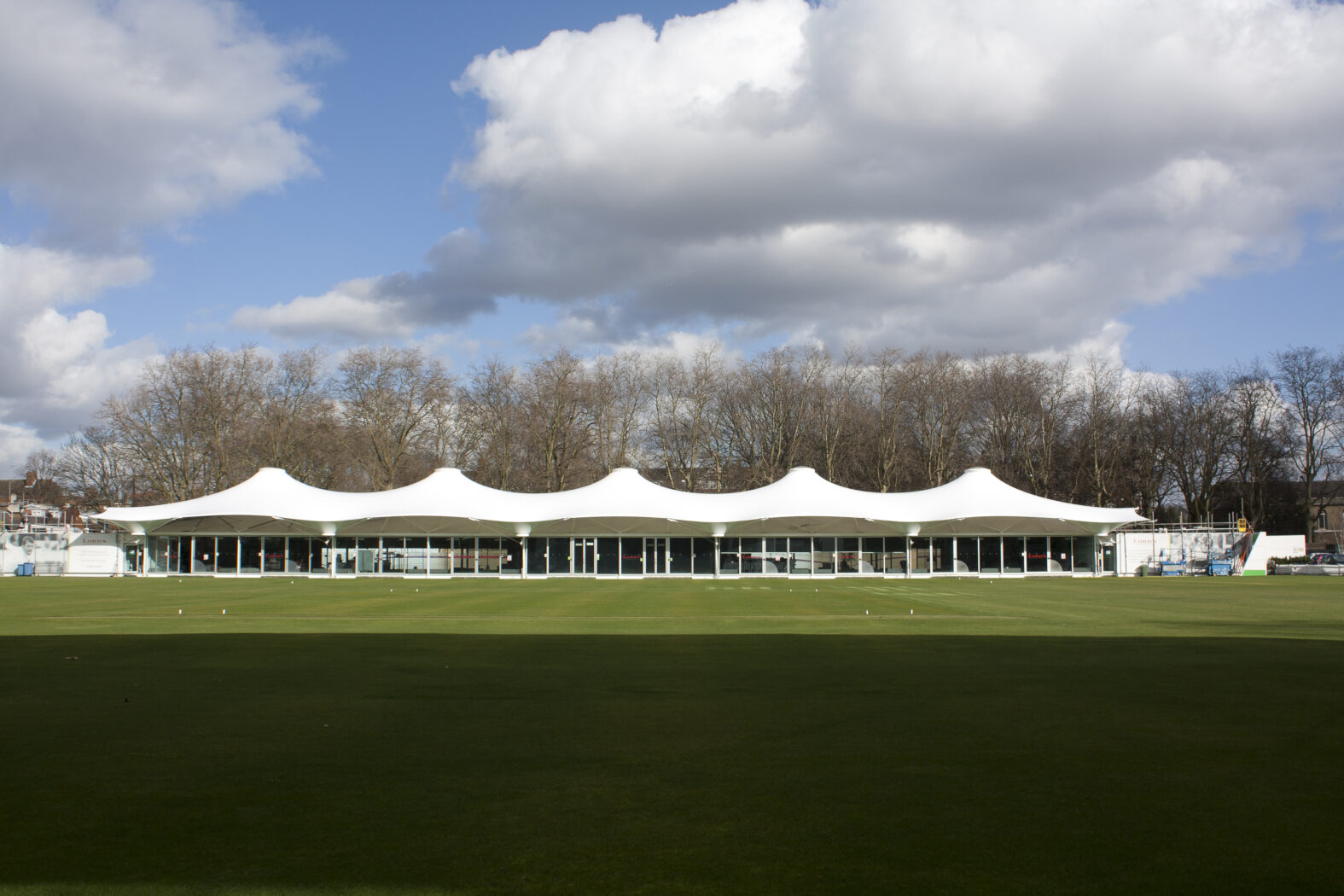
The Nursery Pavilion at Lords Cricket Ground was constructed in 1999 to provide a venue for match day hospitality. Overlooking the Nursery Ground which is used by players to warm up before a match, the pavilion was in need of refurbishment. The brief was for a direct replacement following the exact same roof line, in order to meet planning constraints.
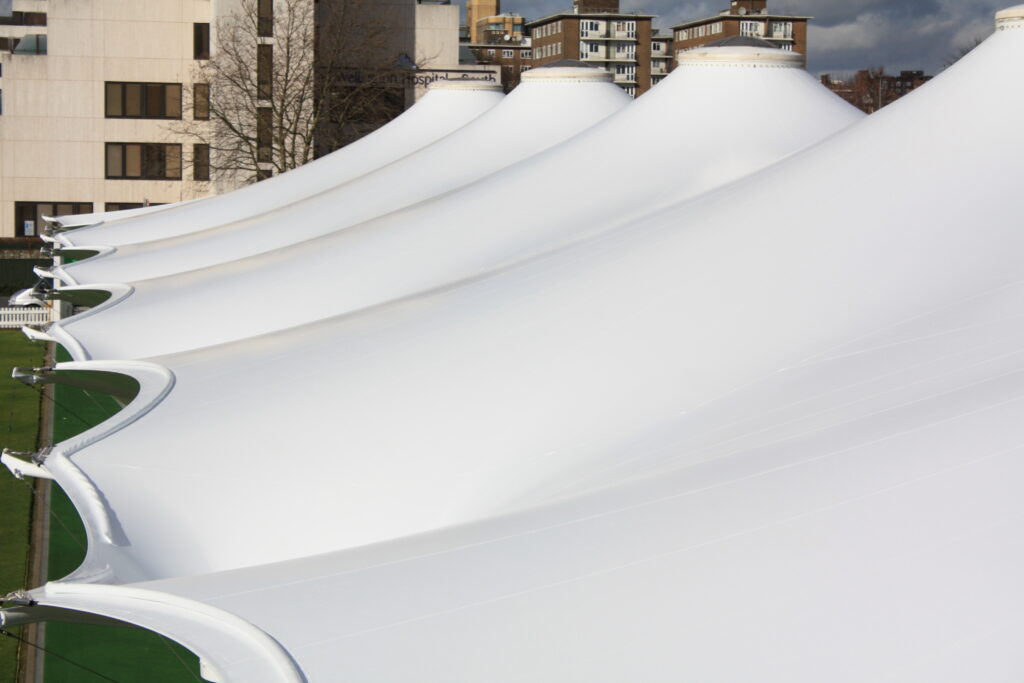
Thanks to innovations in tensile fabric, Base was able to suggest replacing the original 18 piece fabric structure with a single piece design, eliminating the need for the original unsightly metal clamps and speeding up the manufacturing and installation process.
The resulting canopy is a five cone tensile structure using 1900m2 of architectural PVC fabric, requiring an unusual five crane lift for installation. Base’s role included removal of the old pavilion fabric canopy, the detail design, manufacture and the installation of the new replacement. We also oversaw the refurbishment of structural steel and a flat roof structure.
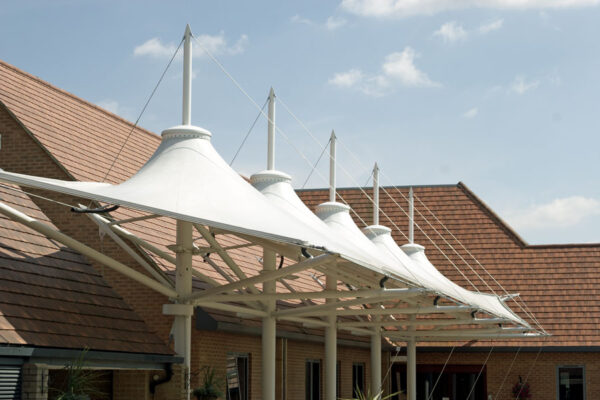
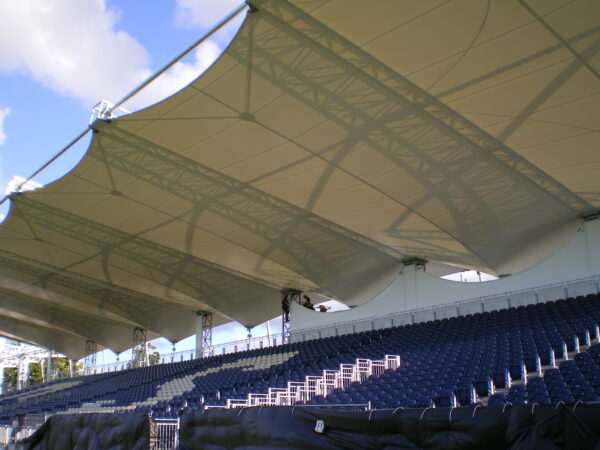
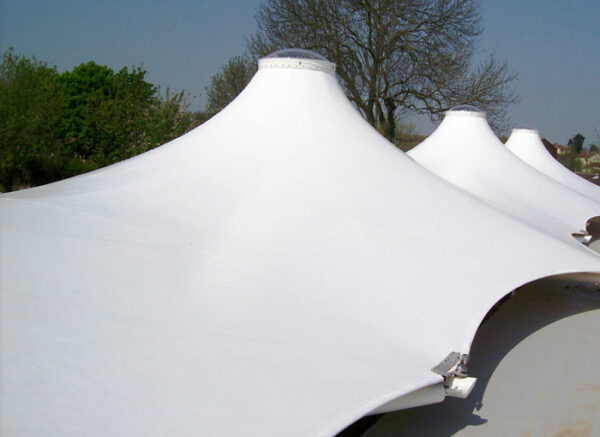

Following our previous works to the Grandstand blinds, the Lords team asked us to carry out a condition survey of the truss steelwork, in doing so it was agreed that the structure required a full redecoration.
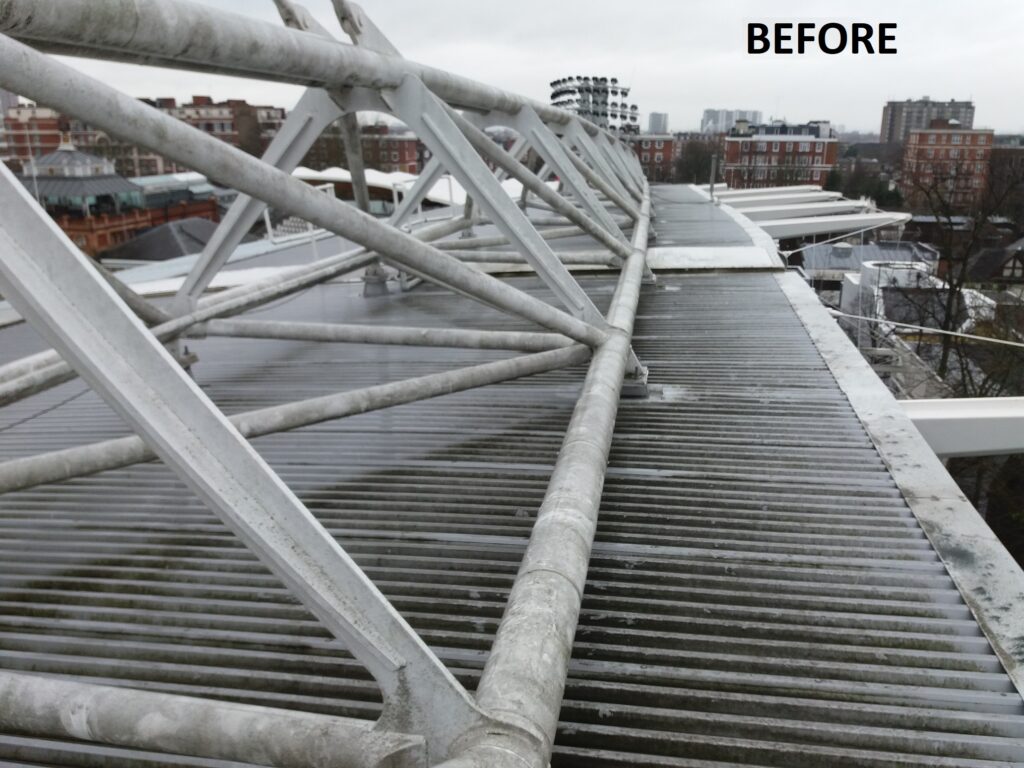
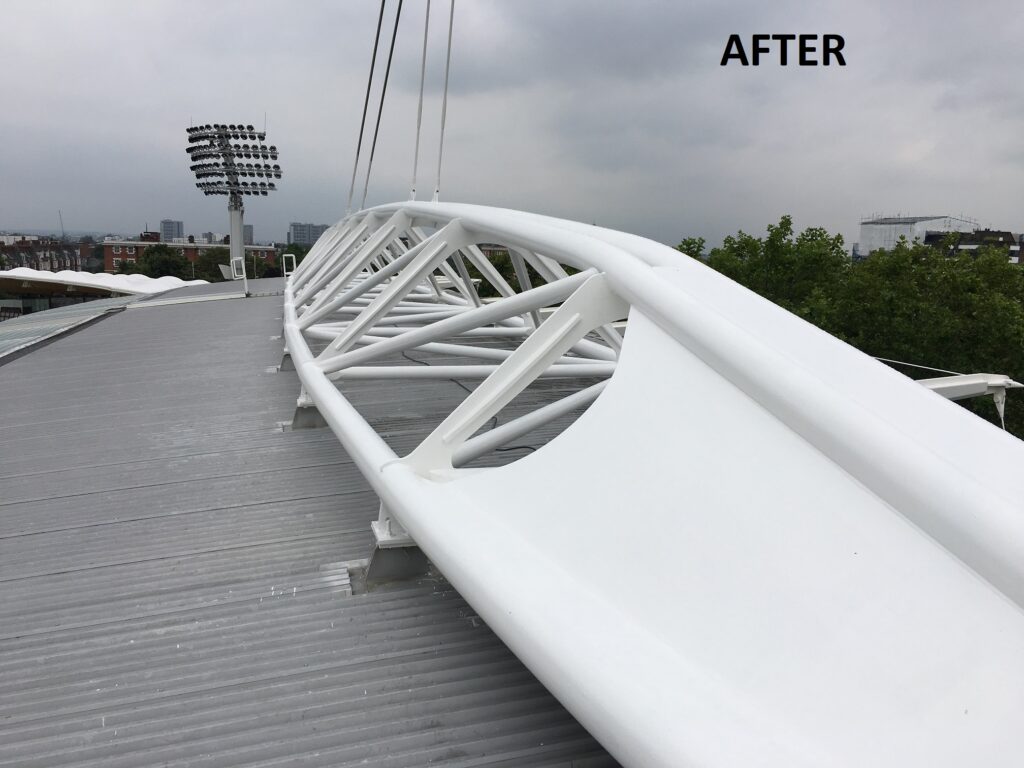
We designed a full painting specification along with all the necessary works. We attended site to clean the steelwork truss, columns, tie rods and flagpoles before project managing the redecoration works by specialist painting contractors.
The results have been well received and the structure has a new lease of life.




Following our previous works to the Lords Grandstand louvre blinds, we were approached to replace some tired ETFE cushions with a cost effective substitute. We were happy to assist and advised a bespoke solution for the new roof-lights to the grandstand which were in great need of improvement.
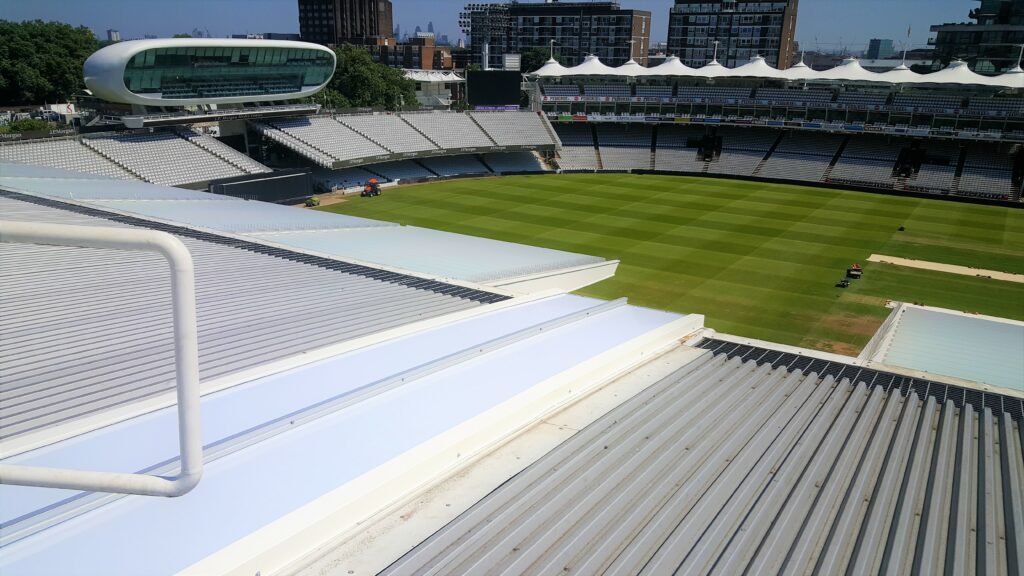
We developed a roof-light scheme that comprised of a series of polycarbonate roof light panels allowing natural light through whilst still providing thermal and weather protection. Importantly, for sporting arenas such as Lords, the specialist matt finish (Softlite) on the polycarbonate suppressed glare and ensures maximum visual comfort. We designed, supplied and installed the roof-light panels, sub frames and associated fixings.




Our brief was to install a series of commercial fabric canopies to the payment kiosks at the London Eye as well as the coffee shop.
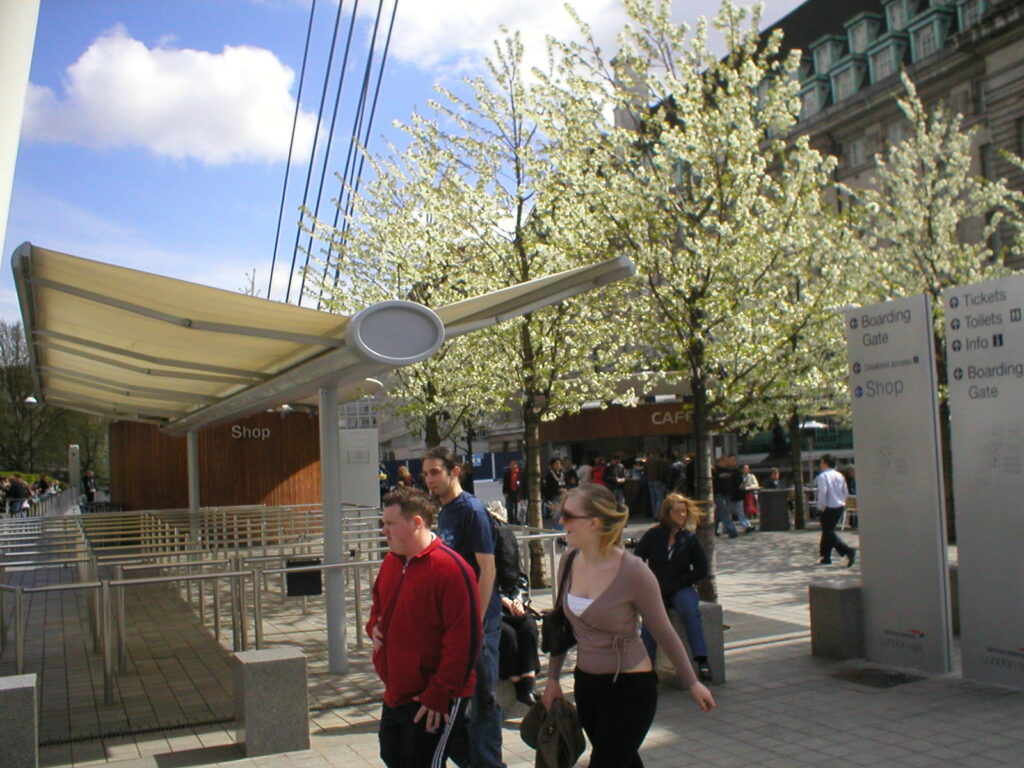
These tensile structures provide shelter and sun shade whilst adding a dynamic visual attraction to this busy tourist area.




As part of our ongoing involvement with the London 2012 Games, working at the Velodrome under the direction of the renowned Hopkins Architects, Base Structures designed, manufactured and installed the interior air permeable mesh screens to the rear of the seating upper tier.
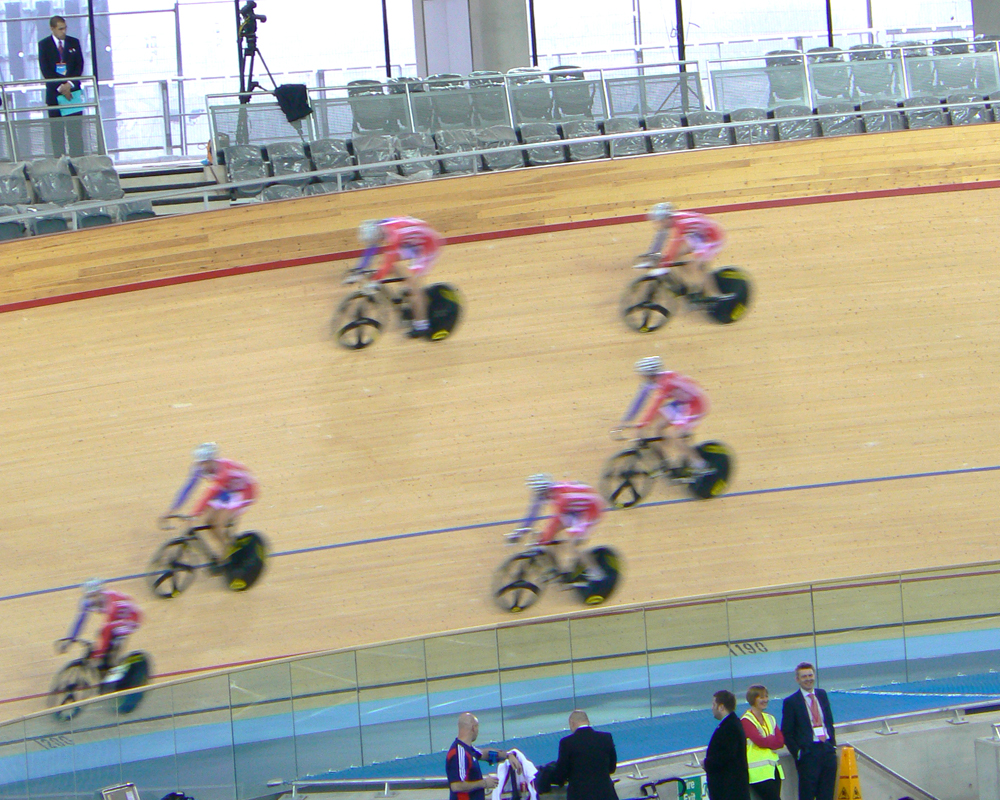
The PVC coated polyester mesh screen is visually continuous around the whole bowl, varying in height and gradient as it fills the void between the seating ‘bleachers’ and the curved roof. The screen serves two purposes in that it hides the air management ducting from view and also provides fall protection from the rear of the precast seating units.
The panels are held in place by a system of extruded aluminium tracks and stainless steel cables, which are in turn connected to the structural steel work and precast concrete seat units through a series of galvanised mild steel intermediate brackets.




During the London 2012 Games the various shooting events took place at the Royal Artillery Barracks in Woolwich. This historic location has one small problem when it comes to clay pigeon shooting however; it is surrounded by main roads and residential streets, not to mention the barracks themselves which remain fully operational throughout The Games. To comply with safety regulations a towering screen had to be erected to stop stray lead pellets from raining down on nearby homes.
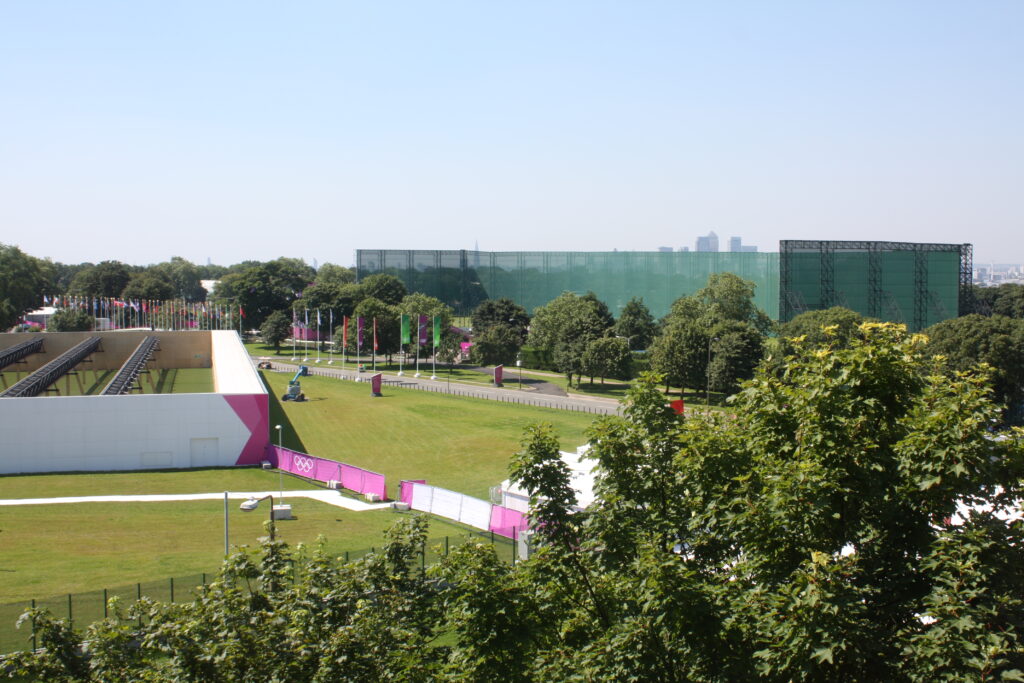
Measuring 334 metres long and over 24 metres high, the green PVC mesh was capable of catching the stray shot to ensure the safety of the local residents. We just hope that the local pigeon population didn’t stray onto the wrong side of the screen as they fluttered past.




The Royal International Pavilion at Llangollen was originally built in 1992 as a combined sports facility and auditorium to host the famous International Eisteddfod. The fabric had become tired and worn over time, and a gradual change in the type of end use left Denbighshire Council looking to both renew the fabric and improve the weathering properties of the auditorium. A temporary summertime extension, which is used for the Eisteddfod and other events also required renewal.
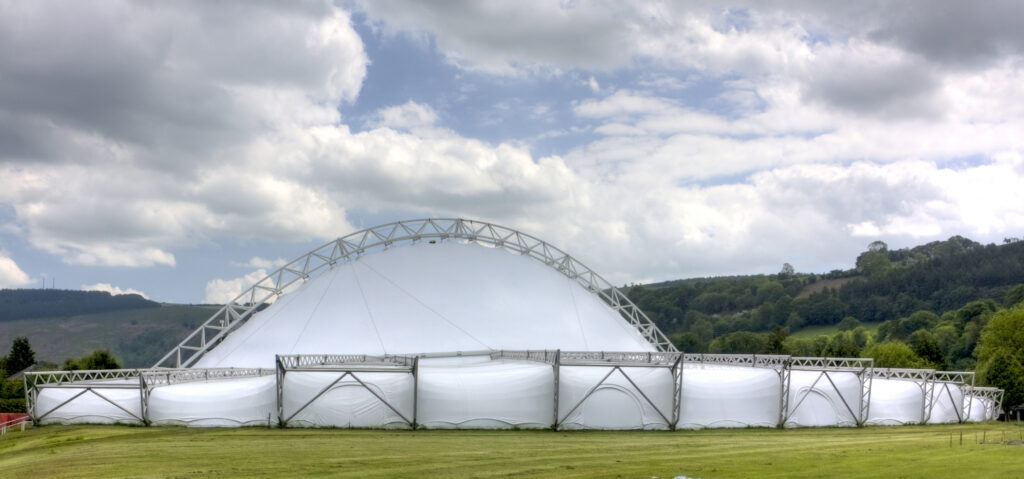
Removing the existing fabric was a carefully staged operation, planned to maintain the structural stability of the building during the process. As the original design information was somewhat sketchy and in some cases lost in the mists of time, Base Structures were required to carry out a full 3D survey of the fabric contact points and use this information to re-model the form, both on the main auditorium and the extension canopies. The new membranes were then assembled in our Bristol factory, and transported to site and installed with great care in a complex lifting operation.
The completed work has given this landmark building a new lease of life, leaving it looking better than ever.




Big enough to become Liverpool’s third cathedral, the latest addition to EON’s Liverpool Bulk Terminal is a massive fabric clad warehouse measuring 65m wide, 170m long and 34m to the apex which to store wood chip and biomass to feed their newly converted Ironbridge Power Station.
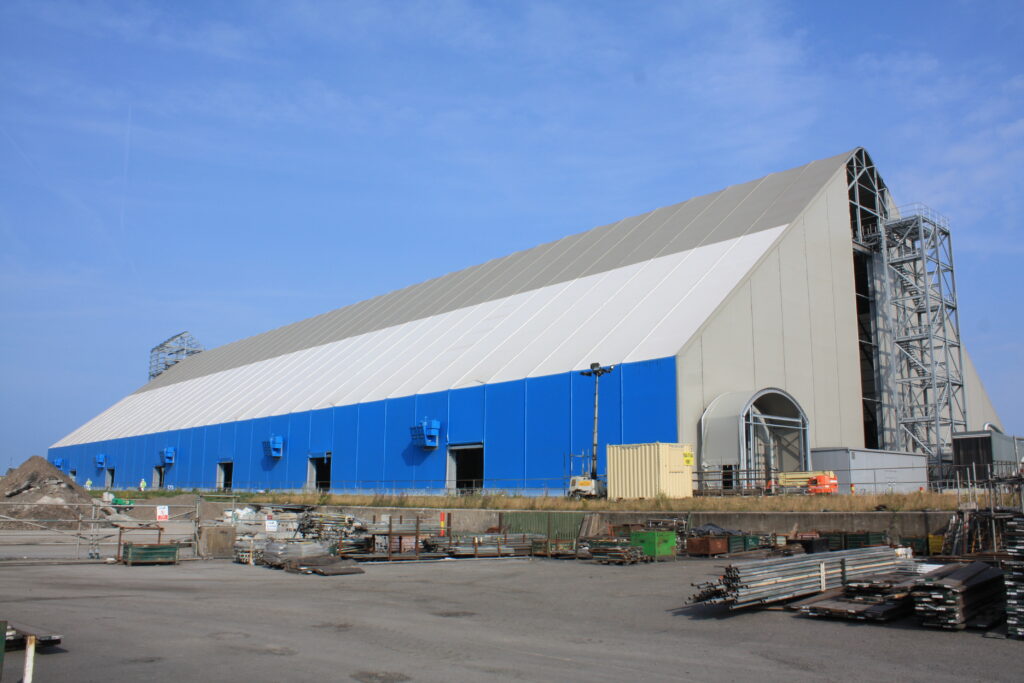
Why tensile fabric? As a warehouse cladding material, it requires less supporting steel than traditional alternatives, making it faster to build as well as being more commercially competitive. In this case, the principle factor was the risk of water ingress affecting the stored biomass. The tensile fabric allows installers to create a sealed environment, thereby minimising the risk to the supply of fuel for the power station.
Base Structures designed and manufactured over 22,000m² of tensile fabric covers to fit the skeleton steel structure designed and installed by the UK division of Losberger De Boer, an international supplier of turnkey temporary or semi-permanent structures for events and commercial applications. The warehouse will be used to store around 65,000 tonnes of biomass fuel with the electricity generated being used to power 250,000 homes. In addition to designing and manufacturing the grey, white and blue PVC covers, Base also provided specialist roped access personnel to assist with key elements of the installation procedure.




For the high quality refit of Leeds City Museum, Redman Design Associates required five large tensile fabric projection screens to be hung in the impressive museum arena.
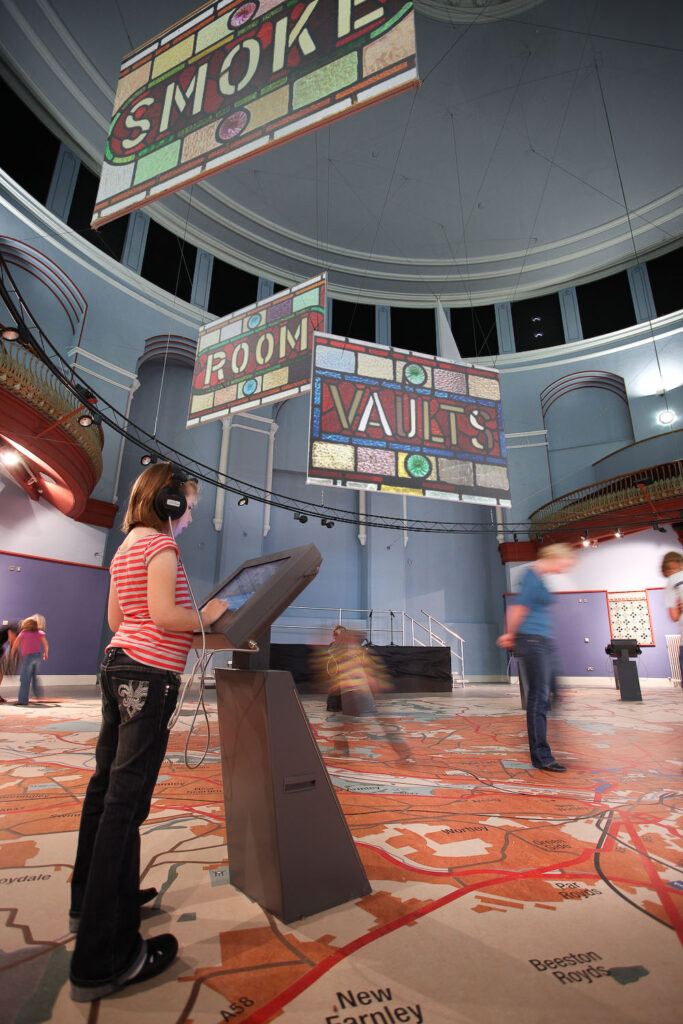
We designed a steel framed screen with very discreet fabric connection details, and positioned the five screens accurately on a complex arrangement of suspension cables. The projectors were then focused and adjusted to provide a high definition image right to the edge of the screens.




Under the government’s Building Schools for the Future (BSF) programme, Lealands School received a £16.5m grant to rebuild and remodel their school. In addition to providing better learning facilities, a major requirement of the scheme was to deliver a vibrant new student social space at ground level, suitable for use in all weather conditions. A low cost scheme was put together to cover the new atrium area which now sits at the heart of the school.
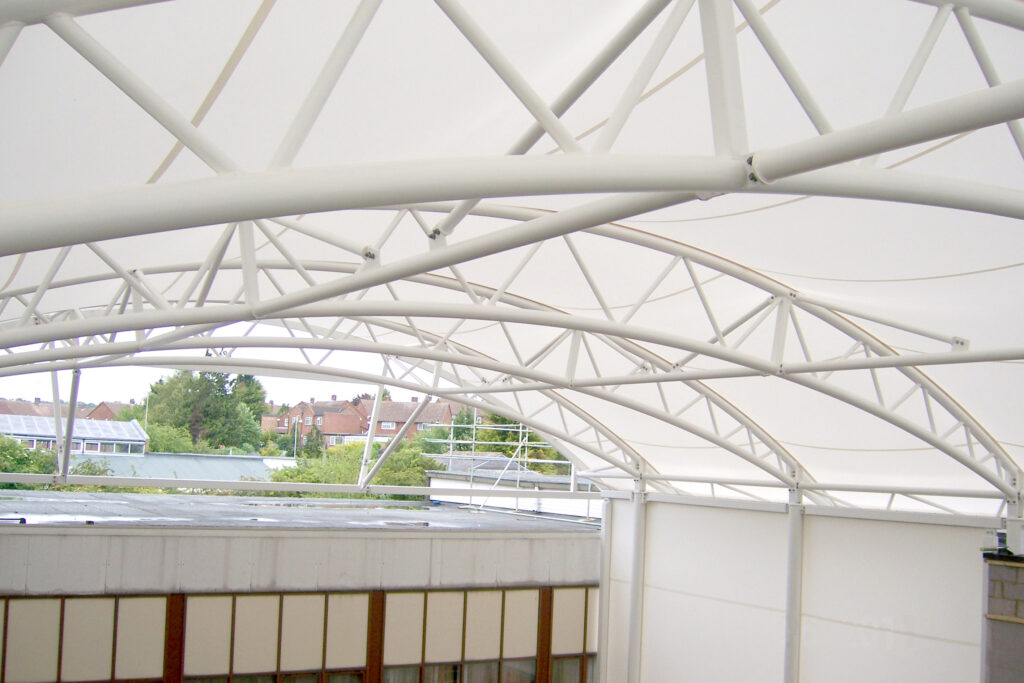
Base Structures were brought in as the specialist design and build contractor to engineer, manufacture and install the steel and fabric elements which comprise the new 410m2 barrel vault roof, incorporating gable end panels and a large fabric wall area to the school’s new frontage. The translucency offered by the PVC fabric ensures plenty of diffused natural daylight still enters into the exciting new communal space but also delivers a high degree of background lighting through all the classroom windows which look out into the new covered courtyard area.
Once more Base received compliments on their efficiency and the quality of their product. Interface with our client, a steelwork contractor for whom we designed the supporting framework, was smooth and mutually rewarding throughout.













